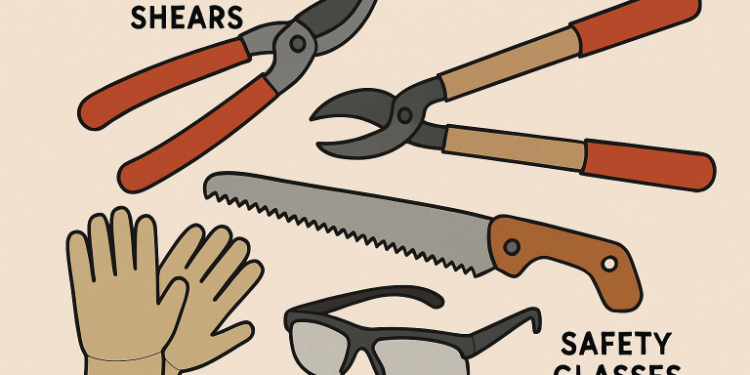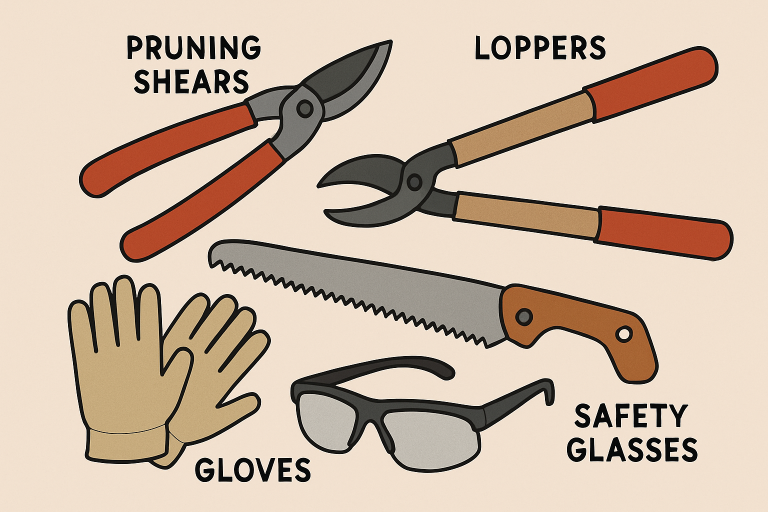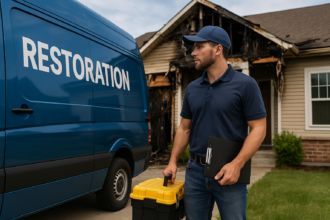The Right Way to Trim Trees Without Harming Them

Table of Contents
Understanding the Importance of Proper Tree Trimming
Tree trimming is about much more than keeping your yard looking neat. Done right, it supports the tree’s structural integrity, deters the onset of diseases, and limits potential hazards to your property. Despite its benefits, improper pruning can cause lasting damage. Following best practices and expert advice—as well as trusted local services such as tree trimming North Richland Hills—ensures your trees remain healthy and safe for years.
Regular maintenance not only boosts curb appeal but also addresses safety concerns by reducing the risk of falling limbs. Additionally, thoughtfully pruned trees grow stronger and more effectively resist common pest and disease problems.
Essential Tools and Safety Gear
Before you start, having the right tools and protective equipment makes all the difference. Basic equipment every homeowner should have includes:
- Pruning Shears: For small, delicate branches up to ¾ inch thick.
- Loppers: Useful for mid-sized branches up to 1½ inches in diameter.
- Pruning Saw: Ideal for tackling large, tough branches that can’t be managed with shears or loppers.
- Safety Gear: Always wear gloves, durable safety glasses, and a helmet to shield yourself from injury or falling branches.
Sharpen and clean your tools before each use to make precise cuts and stop spreading infectious diseases among trees.

Best Time to Trim Trees
Choosing the optimal pruning season is critical. Most trees benefit from being trimmed in late winter or early spring, just before the new growth season begins. This timing helps the tree recover quickly and flourish with renewed vigor in the spring.
Certain species have specialized timing needs. For example, oak trees should only be pruned during colder months to guard against oak wilt disease, a serious affliction spread by insects in warmer weather.
Identifying Branches to Remove
The right cuts make all the difference. Focus on these types of branches first:
- Dead or Diseased Branches: These branches are a source of pests and disease and can compromise the whole tree if not pruned away quickly.
- Crossing or Rubbing Branches: These can create wounds that serve as entry points for pathogens.
- Overgrown Branches: Trimming back limbs obstructing walkways, roofs, or power lines is essential for safety.
Proper Cutting Techniques
How you cut is just as important as what you cut. Follow these best practices:
- Three-Cut Method for Large Branches:
- Start with a small undercut 6-12 inches from the trunk to prevent the bark from tearing when the branch falls.
- To safely remove the branch’s weight, make a second, full cut from the top, just outside the first cut.
- To enable rapid healing, finish with a clean cut right outside the branch collar (the swollen area where the branch meets the trunk).
- Avoid Topping: Cutting off the top of a tree, or “topping,” leads to weak new growth and increased risk of disease and decay. If size reduction is necessary, crown reduction—trimming branch tips selectively—preserves health.
Common Mistakes to Avoid
To keep your tree healthy and strong, avoid these frequent errors:
- Over-Pruning: Removing too much at once (over 25% of the canopy) can shock the tree and inhibit new growth.
- Improper Timing: Pruning in the wrong season may leave trees vulnerable to pests and diseases.
- Dull or Contaminated Tools: Dirty, blunt tools make rough cuts and can easily spread disease between trees.
Post-Trimming Care
After trimming, proper care supports a healthy recovery:
- Watering: Hydrate the tree thoroughly, especially if your area has limited rainfall.
- Mulching: Apply a 2-3 inch layer of organic mulch around the base, keeping it away from the trunk, to conserve moisture and moderate soil temperature.
- Monitoring: In the weeks following pruning, continue checking your tree for signs of stress, disease, or insect problems.
When to Call a Professional
If you’re faced with extremely large trees, branches close to power lines, or aren’t confident about the task, it’s wise to contact a certified arborist. Professionals possess the skills, tools, and safety know-how needed to handle complex trimming without compromising your tree’s health or your personal safety.
With the right approach, tree trimming can enhance your landscape’s long-term beauty and safety, keeping trees healthy and thriving for generations.

